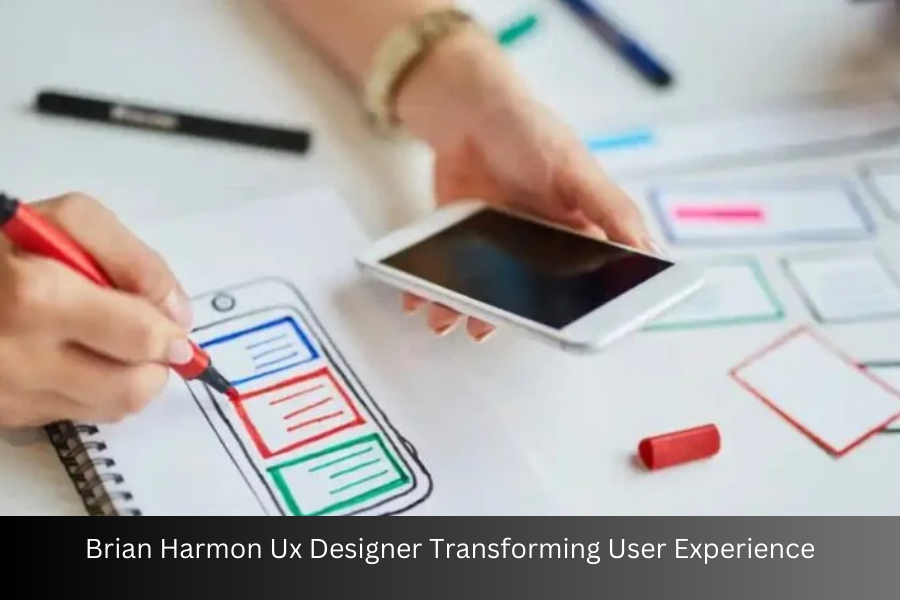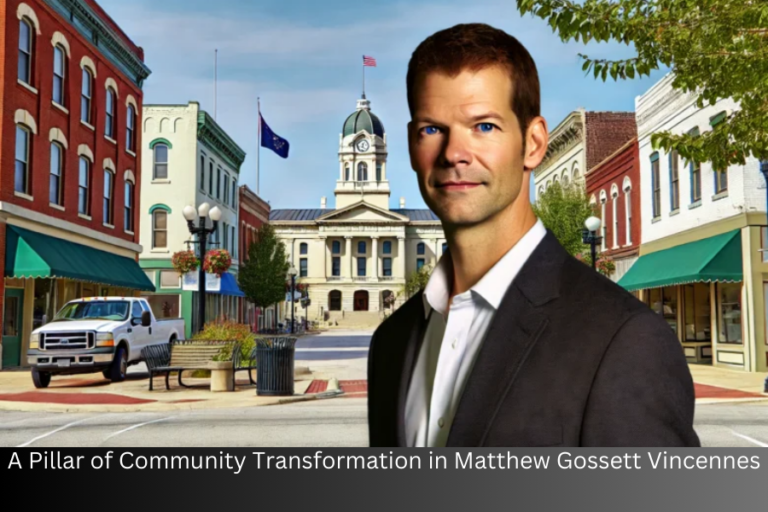Brian Harmon Ux Designer Transforming User Experience
Brian Harmon Ux Designer is a well-established name in the field of user experience (UX) design, known for his ability to blend creativity, technical skills, and user empathy. With years of experience designing interfaces for various industries, including healthcare, e-commerce, and social media, Harmon has set high standards for what great user experience should entail. His design philosophy is centered around understanding the user’s needs and behaviors, ensuring that every product he designs is intuitive, engaging, and accessible.
The Foundation of Brian Harmon Ux Designer Philosophy
Brian Harmon Ux Designer begins with a deep understanding of the user. He emphasizes user-centered design (UCD) as the core principle of his work. By conducting extensive research—such as user interviews, surveys, and usability tests—Harmon ensures that his designs solve real problems. UCD means putting the user’s needs and desires at the forefront of every design decision. Harmon’s dedication to empathizing with users enables him to create digital experiences that not only meet functional requirements but also foster emotional connections with users.
His commitment to empathy and understanding is evident in the way he tackles design challenges. Rather than relying solely on aesthetics, Harmon believes that the most effective designs arise from a comprehensive understanding of how people interact with technology. By combining this deep understanding with a focus on accessibility, his designs are not only usable but also inclusive, ensuring that they are accessible to a diverse range of users.
Crafting Seamless Digital Experiences
Harmon is particularly skilled at creating seamless, intuitive user interfaces. One of his most notable projects involved redesigning the user interface for a leading social media platform, where he streamlined the navigation and made interactions more intuitive. By removing unnecessary complexity, Harmon’s redesign allowed users to navigate the platform with greater ease, resulting in higher user engagement and satisfaction
Another key project in Harmon’s career was his work on a mobile app for the healthcare industry. This app was designed to simplify the process of managing medical appointments, storing health records, and tracking wellness. Harmon’s design process focused on reducing the cognitive load for users, providing them with a clean and simple interface that made accessing and managing health information easier and more efficient. His attention to detail and usability significantly improved the adoption rate of the app, and user feedback was overwhelmingly positive.
Harmon’s design philosophy incorporates a belief that digital experiences should be both visually engaging and highly functional. He recognizes that good design is not just about how a product looks but how it works. Functionality and usability go hand in hand in his designs, ensuring that every digital product he creates is both effective and enjoyable to use.
The Role of Collaboration in Brian Harmon’s Design Process
One of the standout aspects of Harmon’s approach to UX design is his commitment to collaboration. He believes that design is a team effort and involves various stakeholders in the process. Whether it’s working closely with developers, clients, or even users, Harmon ensures that all voices are heard throughout the design process. This collaborative approach helps to align the design with business goals while also ensuring that the needs of users are met.
Harmon’s belief in teamwork extends to his use of design tools and frameworks. He regularly uses modern design platforms such as Figma, Sketch, and Adobe XD to create prototypes and wireframes. These tools allow him to quickly translate his ideas into functional mockups that can be tested and refined. He also utilizes rapid prototyping techniques to create early-stage versions of designs, allowing for quick iterations and feedback. This iterative process ensures that the final product is both polished and user-friendly.
Usability Testing: A Core Component of Harmon’s Process
Usability testing plays a critical role in Harmon’s design process. Before finalizing any design, Harmon conducts extensive usability testing with real users. By observing how users interact with prototypes and gathering direct feedback, Harmon can identify potential issues and areas for improvement. This testing phase is crucial for fine-tuning designs and ensuring that the end product truly serves its intended purpose.
Harmon’s dedication to usability testing goes beyond simply gathering feedback. He integrates this feedback into an ongoing iterative cycle, refining and adjusting designs to ensure optimal user experience. This focus on user testing and continuous improvement is one of the reasons why Harmon’s designs are consistently well-received. By prioritizing the user’s needs throughout the design process, he ensures that each project he works on delivers exceptional value.
Designing for Accessibility and Inclusivity
An important aspect of Brian Harmon’s work is his focus on accessibility. Harmon believes that digital products should be usable by everyone, regardless of their abilities or backgrounds. As such, he follows strict accessibility guidelines, including the Web Content Accessibility Guidelines (WCAG), to ensure that his designs are usable by people with disabilities.
For instance, when designing websites or applications, Harmon takes into account factors such as color contrast, font sizes, and screen reader compatibility. These elements ensure that individuals with visual impairments can use his designs effectively. Additionally, he incorporates keyboard navigation features and designs with responsive layouts, making sure that users with various disabilities can easily access and interact with digital products.
Harmon’s inclusive design approach also extends to understanding diverse cultural contexts and user behaviors. He designs with global users in mind, making sure that his interfaces are intuitive and adaptable to different cultural and language preferences. His commitment to inclusivity has made his work highly valuable to companies that want to create products that resonate with a wide range of users.
Embracing Emerging Technologies
In a rapidly changing digital landscape, staying ahead of technological advancements is essential. Brian Harmon recognizes the importance of embracing emerging technologies and trends to create innovative user experiences. He has explored and experimented with technologies such as augmented reality (AR), virtual reality (VR), and voice interfaces to push the boundaries of what UX design can achieve.
Harmon’s forward-thinking approach allows him to design for the future of digital interactions. For example, with the rise of AR and VR, Harmon has been involved in creating immersive user experiences that take full advantage of these technologies. Whether it’s designing an AR shopping experience or a VR interface for healthcare applications, Harmon’s ability to adapt to new technologies ensures that his designs remain relevant and cutting-edge
Brian Harmon’s Influence in the UX Design Community
In addition to his design work, Brian Harmon has become a respected thought leader in the UX community. He frequently speaks at design conferences, where he shares his insights on the latest trends, best practices, and challenges in the field. His thought leadership has made him a sought-after speaker and mentor in the design community.
Harmon’s contributions to UX design extend beyond his own projects. Through his blog, articles, and speaking engagements, he educates other designers on the importance of user-centered design, usability testing, and inclusive practices. His dedication to advancing the field has inspired countless aspiring designers and helped shape the future of UX design.
Harmon’s mentorship efforts are another testament to his commitment to the design community. He actively participates in workshops and training programs, offering guidance and support to the next generation of UX professionals. His passion for teaching and mentoring has made a lasting impact on the careers of many young designers.
Navigating the Future of UX Design
As UX design continues to evolve, Brian Harmon remains committed to pushing the boundaries of what’s possible. He is focused on exploring new design opportunities and improving user experiences in emerging fields like artificial intelligence (AI), machine learning (ML), and autonomous systems. Harmon’s adaptability and forward-thinking approach ensure that he remains a key player in the ever-changing world of UX design.
His ability to blend creativity with technical precision, his user-centered design philosophy, and his emphasis on inclusivity and accessibility make him a standout figure in the industry. As the digital landscape continues to evolve, Brian Harmon’s influence will undoubtedly shape the future of user experience design.
Conclusion
Brian Harmon Ux Designer community, recognized for his commitment to creating intuitive, user-centered digital experiences. Throughout his career, Harmon has showcased his expertise in crafting seamless designs that balance both aesthetics and functionality. His focus on empathy, accessibility, and collaboration has enabled him to tackle design challenges across diverse industries, from healthcare to e-commerce and social media platforms. By employing cutting-edge design tools, continuously testing his designs, and embracing emerging technologies, Harmon has cemented his reputation as a forward-thinking designer.
Beyond his project work, his contributions to the UX community as a mentor and speaker have made a lasting impact. Through his efforts to share knowledge and encourage the next generation of designers, Harmon continues to inspire and shape the future of user experience design. As digital technologies evolve, Harmon’s approach to creating user-first, accessible, and innovative designs ensures his relevance and influence in the industry.
Frequently Asked Questions (FAQs)
1. Who is Brian Harmon?
Brian Harmon is a renowned UX designer known for his user-centered approach to design. He has worked on various projects across industries, such as healthcare, e-commerce, and social media, creating designs that prioritize functionality, accessibility, and user satisfaction.
2. What is Brian Harmon Ux Designer ?
Brian Harmon Ux Designer philosophy revolves around understanding the needs and behaviors of users. He advocates for user-centered design, ensuring that products are not only visually appealing but also functional and intuitive. He believes in empathy and accessibility, aiming to create inclusive experiences for users of all backgrounds and abilities.
3. What are some notable projects Brian Harmon has worked on?
Brian Harmon has been involved in several impactful projects, including redesigning the user interface for a major social media platform and creating a mobile healthcare app. In these projects, Harmon focused on improving usability and engagement while simplifying complex processes, such as appointment scheduling and health record management.
4. What tools does Brian Harmon use for design?
Harmon uses a variety of design tools, including Figma, Sketch, and Adobe XD, to create prototypes and mockups. His focus on rapid prototyping and iteration allows him to refine his designs based on real user feedback, ensuring the final product is polished and user-friendly.
5. Why is accessibility important in UX design?
For Brian Harmon, accessibility is a fundamental aspect of UX design. He designs with the goal of making digital experiences usable by people of all abilities, including those with visual impairments, mobility issues, and other disabilities. By adhering to accessibility guidelines like WCAG, he ensures that his designs reach a broader, more diverse audience.
6. How does Brian Harmon stay up-to-date with UX trends?
Harmon stays current with the latest trends in UX design by attending industry conferences, participating in workshops, and actively engaging with the UX community. His commitment to learning and experimenting with emerging technologies like augmented reality (AR), virtual reality (VR), and voice interfaces allows him to keep pushing the boundaries of what’s possible in UX design.
7. How can Brian Harmon’s work help businesses?
Businesses can benefit from Brian Harmon’s UX expertise by implementing his user-centered designs that enhance usability, reduce friction in user interactions, and improve customer satisfaction. His designs not only drive better engagement but also align with business goals, making products more effective and successful in the market.
8. Is Brian Harmon involved in mentoring aspiring designers?
Yes, Brian Harmon is actively involved in mentoring aspiring UX designers. Through workshops, training sessions, and collaborations with universities, he shares his knowledge and helps the next generation of designers develop the skills necessary to succeed in the industry.
9. What is Brian Harmon’s approach to usability testing?
Brian Harmon places a strong emphasis on usability testing as part of his design process. By conducting tests with real users, he gathers valuable feedback that helps refine his designs. This iterative approach ensures that his final products are intuitive, user-friendly, and aligned with user needs.
Stay updated with the latest news and notifications Usa Guest News


